It’s a strange thought, living your life without ever seeing a clear reflection of your physical self but before the industrial revolution of the nineteenth century, mirrors , originally known as looking-glasses, were one of the rarest and most prized items one could own.
Who is the fairest of them all? Rare Georgian mirrors and antique looking glasses.
16 March 2018
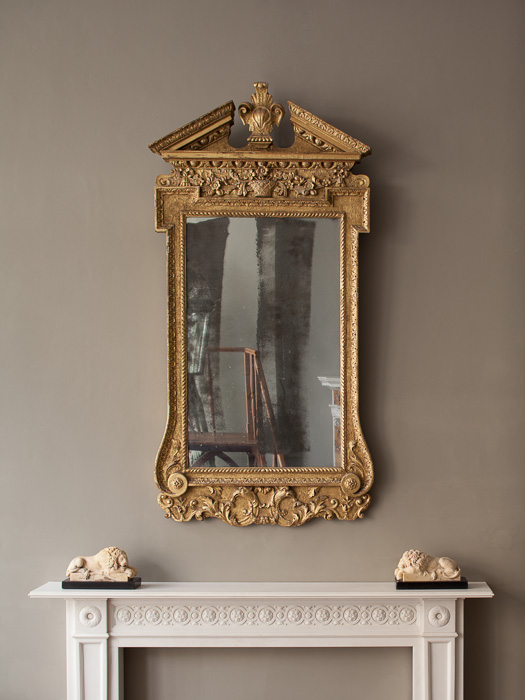
An Irish George II Carved Pedimented Antique Mirror from Somerton Castle, Lincolnshire.
Of course there were ways of seeing yourself, the ancient civlisations used polished rocks and then metals and there is always the magic within seeing ones reflection within water and light. In Ancient Rome, every fashionable woman wealthy enough owned a small hand held mirror which was part of ones ‘jewellery’ set but as the Roman philosopher, Seneca, noted, full length mirrors cost more than the dowry of a General’s daughter. It was not until the 17th century that it became more common for mirrors to be used as a wall decoration.
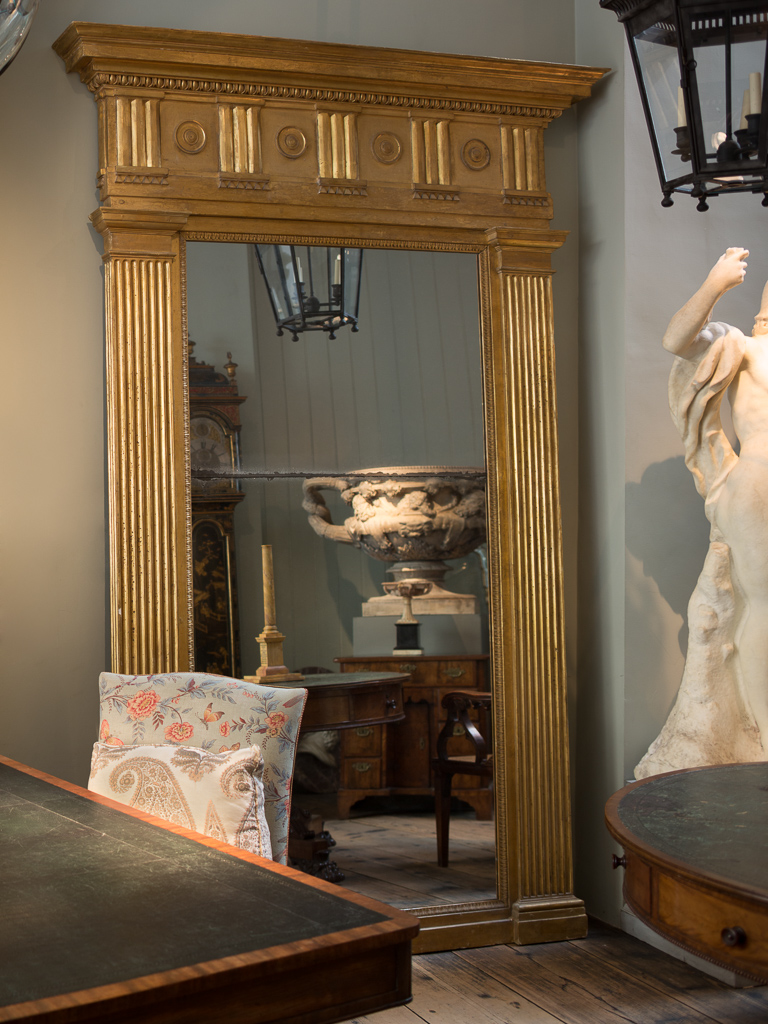
A large Regency Carved Giltwood Pier Mirror with projected egg & dart cornice above classical decorated frieze and fluted pilasters enclosing rectangular divided plate.
Mirrors became the most revered pieces of furniture, symbols of huge wealth and proffered as gifts to Royals. Pure handed craftsmanship, not only in the constructing of intricate gilt framing but in the hugely skilled and complex glass making – highly dangerous and incredibly expensive to make. Glass became a commodity.
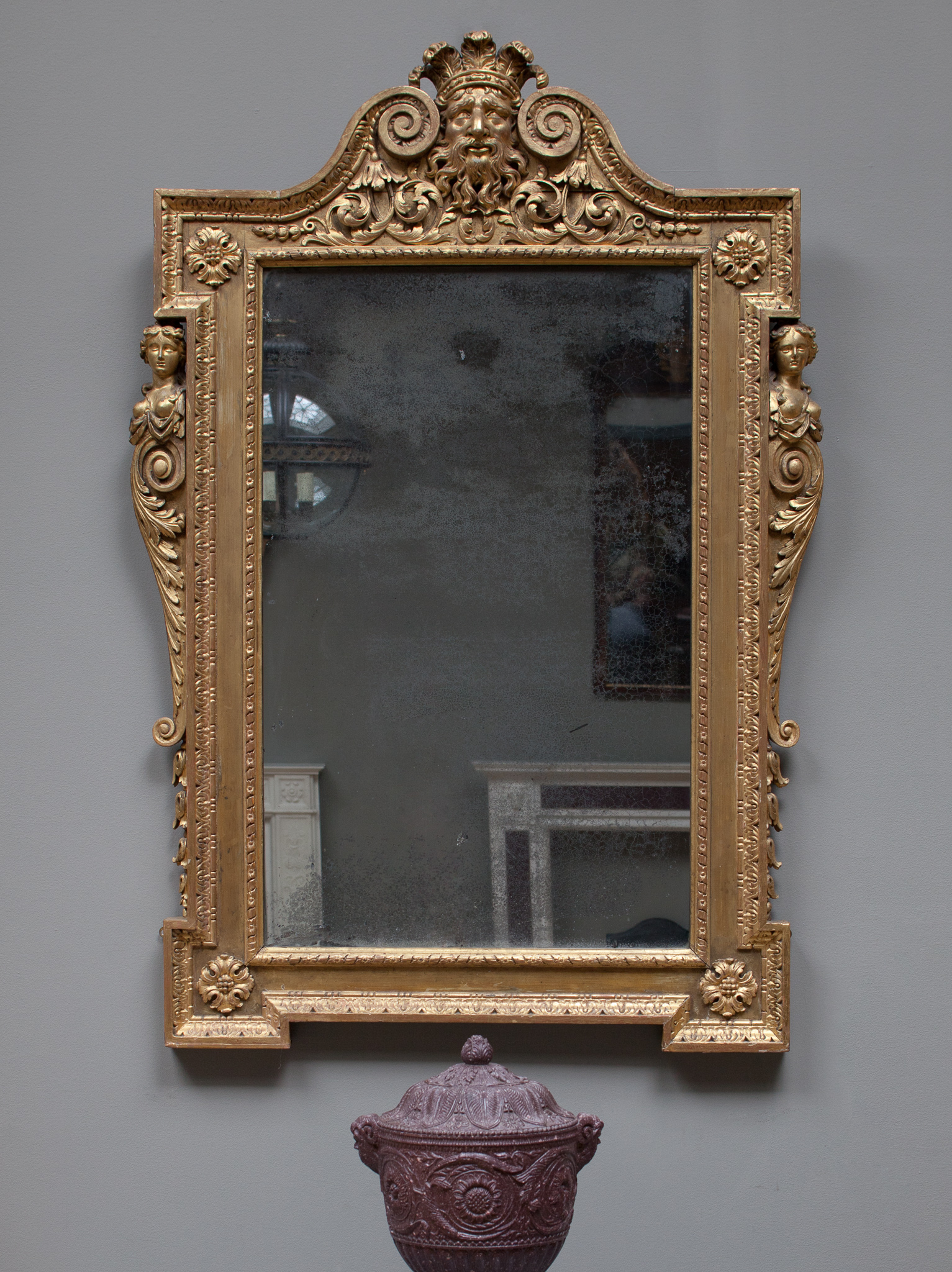
A superb George II Carved Gilt wood Pier Mirror. 1730. Headed by a scroll pediment centred by a bearded and crowned mask with a rectangular plate within a Kentian frame. Flanked by a pair of female terms.
The mirror above has a wonderful history also in it’s former ownership by the great collector and connossieur of the finest crafted Georgian furniture, Professor Clifford Ambrose Truesdell of Il Palazetto, Baltimore.
In the 17th and 18th centuries, the size of mirror plates became a point of competition never seen in England before. The Venetians had established themselves as world experts and in the 17th century the 2nd Duke of Buckingham, alongside John Bellingham created the most famous glass works in England, the Vauxhall Glassworks in London, recruiting a team of Venetian glassmakers and creating a near total control over the supply of plate glass in England until it closed in the 1780’s using the cylinder process (where cylinders of glass were blown then split open and laid flat). An example of this is shown below:
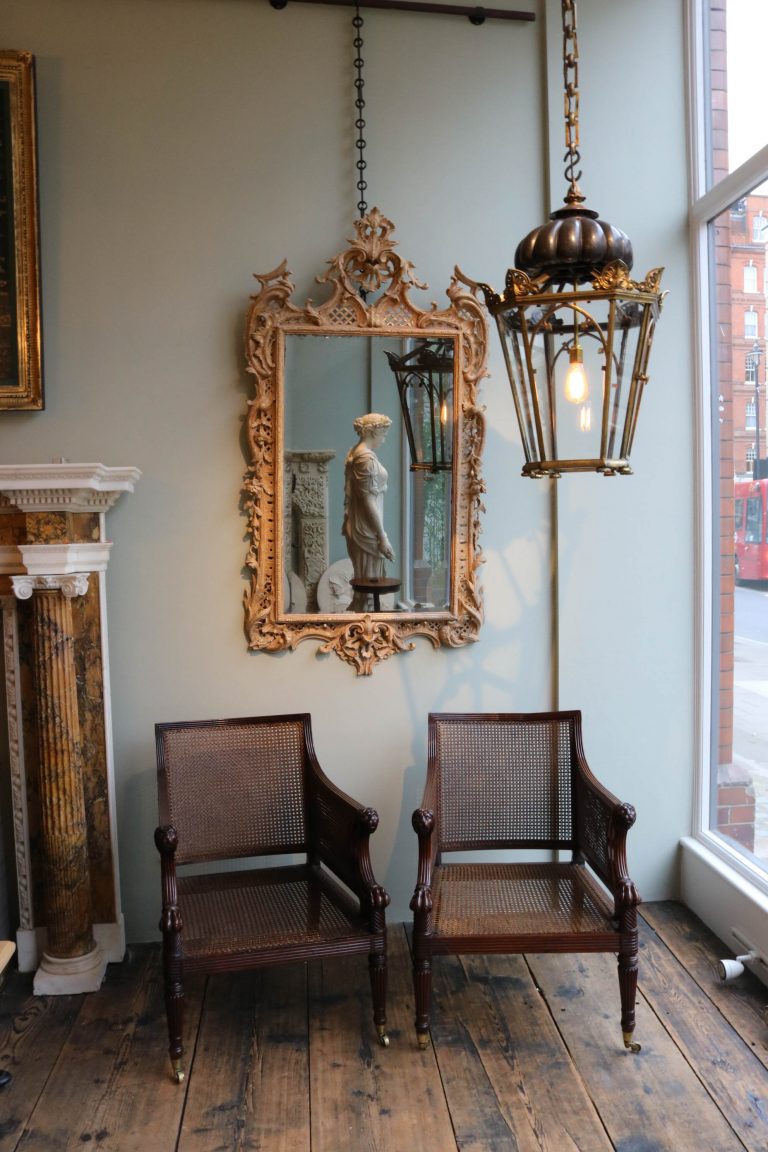
An exceptionally finely carved and gilded George II pier mirror, with profuse Rococo scroll, leaf and lattice decoration enclosing a beautifully patinated Vauxhall bevelled plate. English circa 1755, shown here with our Windsor reproduction hanging lantern and a pair of rare Regency carved mahogany Bergere library chairs.
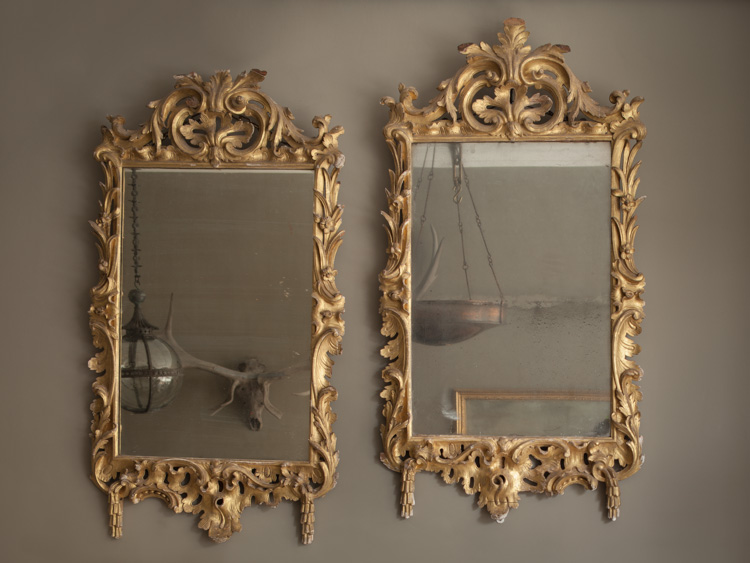
In the antique world it is extremely exciting and unusual, especially with mirrors, to find a pair that started off in life together – instead of pieces that have been put together. A pair made especially, left and right handed, each a mirror of the other: such as these extremely important pair of early 18th Century carved Irish Giltwood Rococo Mirrors from Bantry House in Ireland.
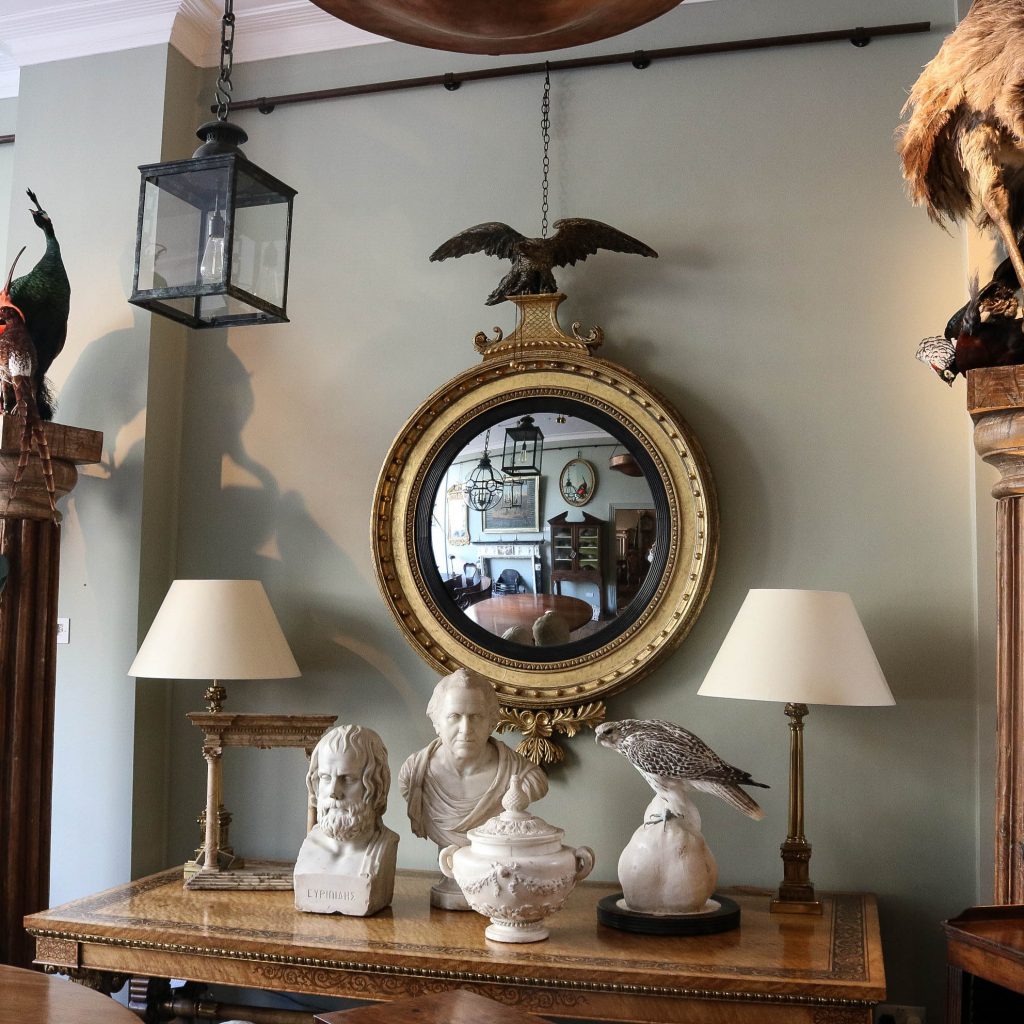
A Magnificent Regency giltwood convex mirror of great scale.
The Eagle is a favoured motif that was used often in the craftsmanship of antique mirrors and furniture. It symbolises great strength and hope, nobility and power. It was used as a symbol by many of the great empires including the Romans. The Greek god Zeus and the Roman god Jupiter, the most important leaders of the gods, were symbolised by the eagle.
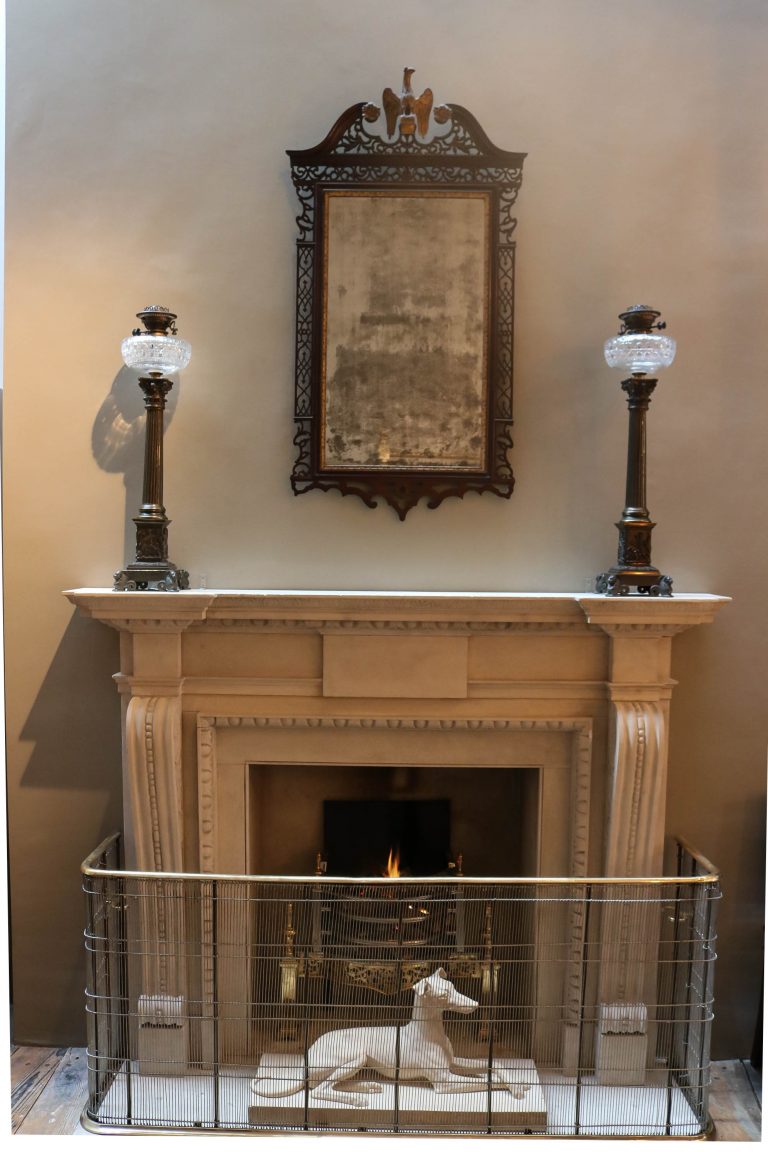
A rare mid 18th century Irish carved mahogany pier mirror with parcel gilt eagle cresting a well patinated rectangular mercury plate, within extensive fretwork and scrolling mahogany frame. Irish 1755.
The plate of this rare 18th century Irish pier mirror is delicious. It is an important consideration to me when I am buying antique pieces that their original form is entire and it amazes me that these rare examples have survived the centuries.
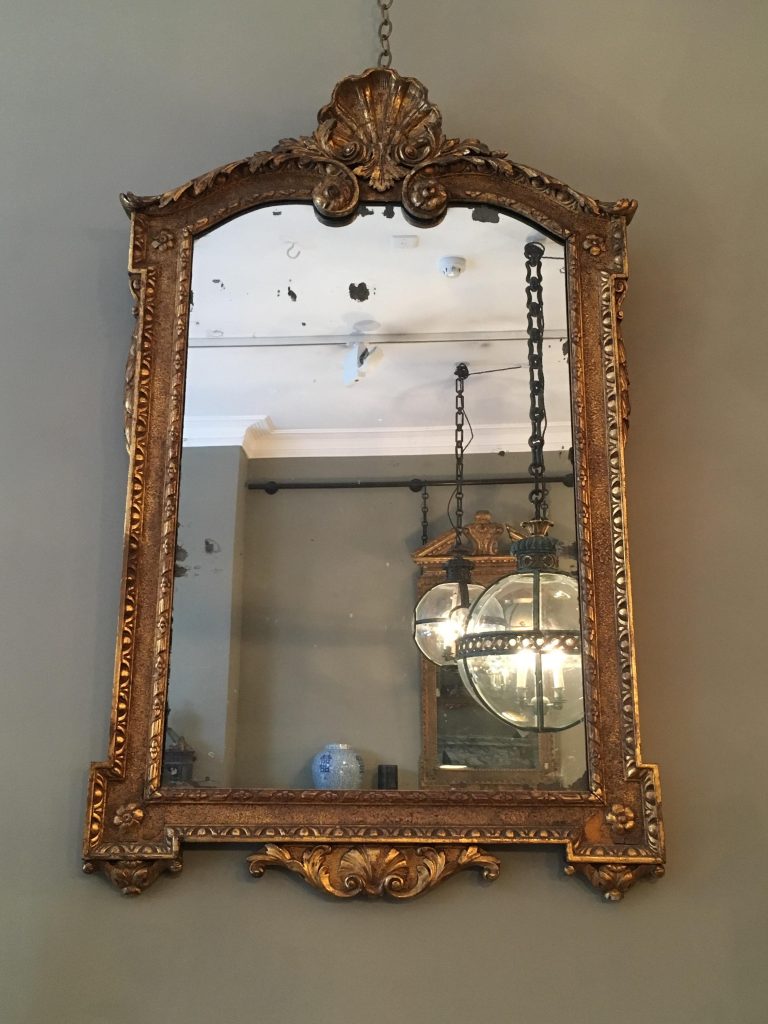
A George II Carved Giltwood Pier Mirror in the Palladian Manner, the design attributed to Benjamin Goodison.
The broken pediment enclosing a foliate and shell cartouche above a rectangular beveled plate with egg and dart border and bold shell and acanthus apron. English Circa 1735.
Benjamin Goodison (1700-1767) served his apprenticeship with James Moore of ‘Moore and Gumley’ the pre-eminent London cabinetmaker during the reign of George I. Goodison derived much of his inspiration in his original designs from the Neo-palladian designs of William Kent. He supplied to royalty and ‘the nobility’between 1727 and 1767 and was favoured by the Prince of Wales. His work can be found in Hampton court Palace and a similar example of the above is exhibited in the Victoria and Albert Museum. He made pieces for the Prince of Wales, Earl of Leicester of Holkam Hall, the first and second Viscounts Folkestone at the Longford Castle and the Duke of Newcastle.
Nothing is more complete in the country house aesthetic than a looking glass above the focal point of any room: the chimneypiece. It is an interesting and effective tool to enchance the entire surroundings of the room and it is a favourite format that we use in our advertising images.
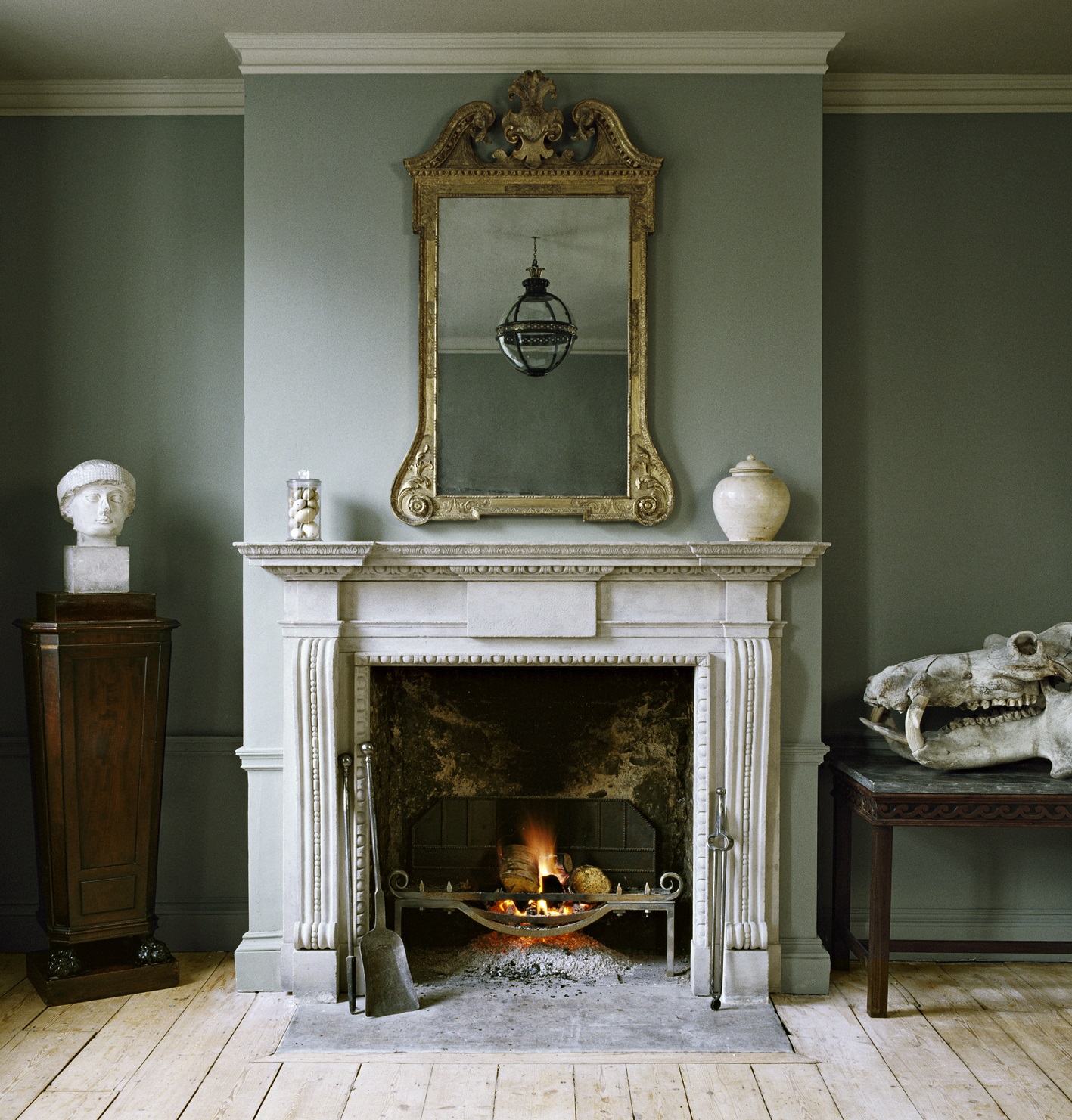
A very charming Swan neck pedimented George II gilt mirror is the focal point above the Cheere reproduction mantel.



